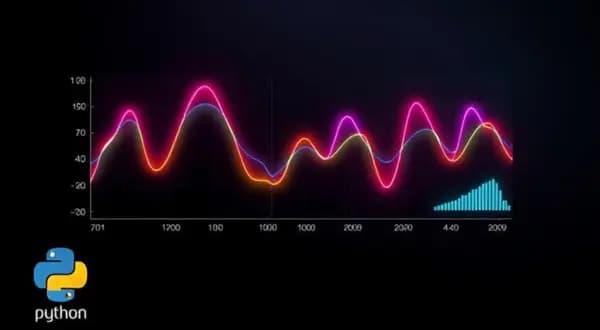Project Overview
This project starts by importing and preparing the data. We clean the data, handle missing values, and set the date column as an index. This is how we establish it as a time series. We also set the frequency to monthly data using .asfreq('M'). Next, we explore the data visually. For example, we plot the trends for features like Healthcare, Banking, Telecom, and others. We also generate random white noise to understand the randomness and how it compares with actual data patterns.
The real fun starts when testing the stationarity of the series with the ADF Test. This enables us to make decisions on whether the series requires stationarity before modeling. Then we adopt three different approaches from Arima, Arimax and Sarimax. Finally, we shall compile all the models into a table to find out which has the best performance based on metrics like AIC and Log Likelihood. At the end of this, we will have created a solid forecasting model that is useful in predicting the future of industries like Healthcare.
Prerequisites
- Python programming and knowledge of Pandas, NumPy, and Matplotlib libraries.
- Prior knowledge of time series data and some of the key things like time series data including trends, seasons, and stationarity.
- Understanding of cyclical and trend patterns using ARIMA, ARIMAX, SARIMAX, and forecasting procedures.
- Some background knowledge about statistical computing and elements of model assessment as AIC and Log Likelihood factors.
- Familiarity with using Jupyter Notebooks for code execution and result visualization.
Approach
In this project, a systematic procedure is used for forecasting the time series. We import and clean the dataset, creating a date-indexed data structure that contains monthly frequency data. After missing values, we visualize the data for further understanding of its trends and patterns. Next, an ADF test is performed to check for stationarity, and if needed, transformations, including differencing, are applied. Afterward, we fit several models starting with ARIMA, which would then incorporate additional variables such as Banking to create an ARIMAX model and also explore seasonal components with SARIMAX. Finally, we evaluate all the models using metrics such as AIC and Log Likelihood to make a comparative analysis between them and find out the best model for future forecasting in the Healthcare sector and others.
Workflow and Methodology
Workflow
- Data Preparation: Import and cleanse the data, establishing the date column as an index while checking for missing values.
- Data Visualization: Visualize the data to observe trends and patterns in features such as Healthcare and Banking.
- Stationarity Check: ADF test performed for stationarity with data transformation, if needed.
- Model Fitting: Fit and evaluate ARIMA, ARIMAX, and SARIMAX.
- Model Comparison: Compare the models using AIC and Log Likelihood.
Methodology
- We use ARIMA to model univariate time series data and test various configurations.
- Use ARIMAX to incorporate external variables to forecast better.
- Seasonality and trend should be accounted for in the data using SARIMAX.
- Use ACF plots to analyze model residuals to see if they are random, and check model fit.
- Identify the best model using AIC and Log Likelihood parameters for better predictions.
Data Collection and Preparation
Data Collection:
In this project, we collected the dataset from a public repository. If you are looking to work on a real-world problem, you can get these kinds of datasets from publicly available repositories such as Kaggle, UCI Machine Learning Repository, or company-specific data. We will provide the dataset in this project so that you can work on the same dataset.
Data Preparation Workflow:
- Using pandas load the dataset and inspect the first few rows.
- Set the date column (e.g., "month") as the index for time series analysis.
- Use isna().sum() to check for values in the data.
- Missing values are handled differently based on the situation, by filling or dropping.
- Use .asfreq('M') to set the frequency of data to monthly.
- Ensure that the data is in the right format for time series analysis.
Code Explanation
STEP 1:
Mounting Google Drive
First, mount Google Drive to access the data stored in the cloud.
